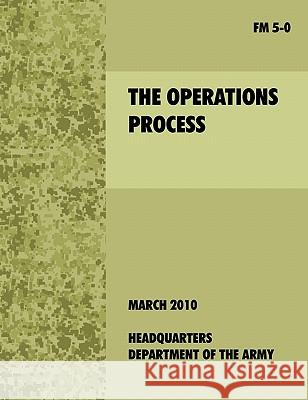The Operations Process: The official U.S. Army Field Manual FM 5-0 » książka
The Operations Process: The official U.S. Army Field Manual FM 5-0
ISBN-13: 9781907521713 / Angielski / Miękka / 2010 / 254 str.
The six chapters and its associated ten appendixes of this edition of field manual (FM) 5-0, The Operations Process, constitute the Army's view on planning, preparing, executing, and assessing operations. Together with FM 6-0, Mission Command: Command and Control of Army Forces, this manual provides the Army with a common philosophy and language for the exercise of command and control throughout the conduct of operations. This version of FM 5-0 increases the scope of the manual over previous versions from strictly a manual on planning and orders production to a manual that addresses all activities of the operations process. It describes how commanders, with support from their staffs, drive the operations process through battle command-the art and science of understanding, visualizing, describing, directing, leading, and assessing operations to accomplish missions. This change intends to better describe the dynamic relationship among the commander, staff, subordinate commanders and their staffs, and other military and civilian partners throughout the operations process-not just planning. In addition, FM 5-0 incorporates design within the operations process. Design is an approach to critical and creative thinking that assists commanders in understanding, visualizing, and describing complex problems and developing approaches to manage or solve them.
The six chapters and its associated ten appendixes of this edition of field manual (FM) 5-0, The Operations Process, constitute the Armys view on planning, preparing, executing, and assessing operations. Together with FM 6-0, Mission Command: Command and Control of Army Forces, this manual provides the Army with a common philosophy and language for the exercise of command and control throughout the conduct of operations. This version of FM 5-0 increases the scope of the manual over previous versions from strictly a manual on planning and orders production to a manual that addresses all activities of the operations process. It describes how commanders, with support from their staffs, drive the operations process through battle command-the art and science of understanding, visualizing, describing, directing, leading, and assessing operations to accomplish missions. This change intends to better describe the dynamic relationship among the commander, staff, subordinate commanders and their staffs, and other military and civilian partners throughout the operationsprocess-not just planning. In addition, FM 5-0 incorporates design within the operations process. Design is an approach to critical and creative thinking that assists commanders in understanding, visualizing, and describing complex problems and developing approaches to manage or solve them.











